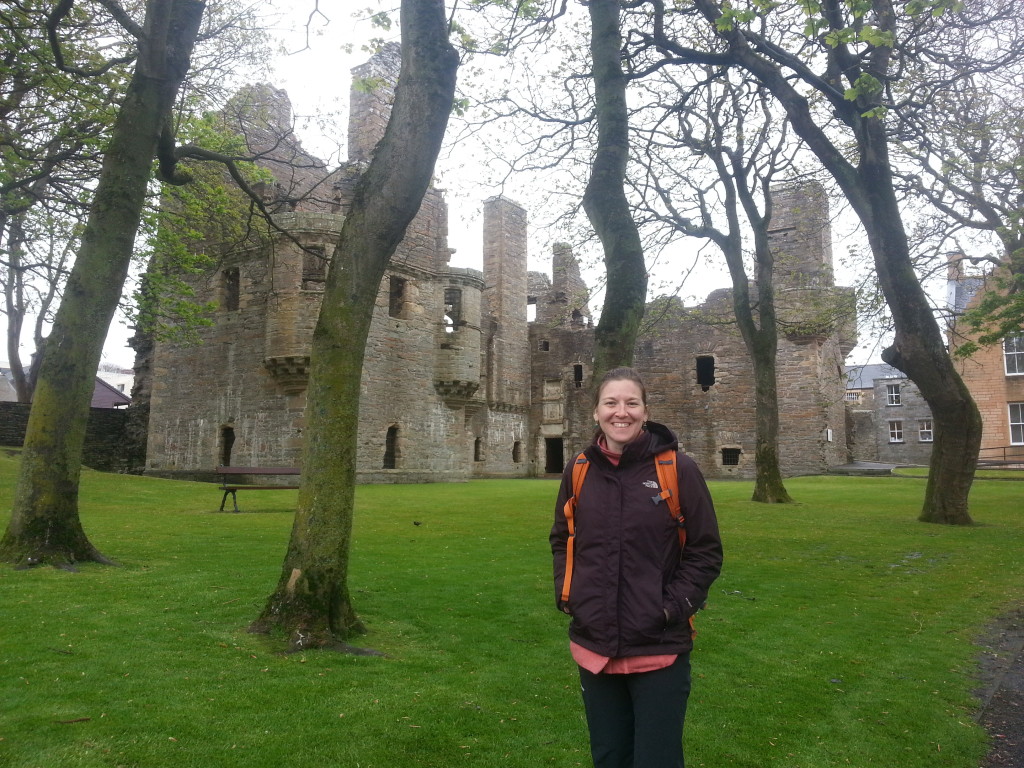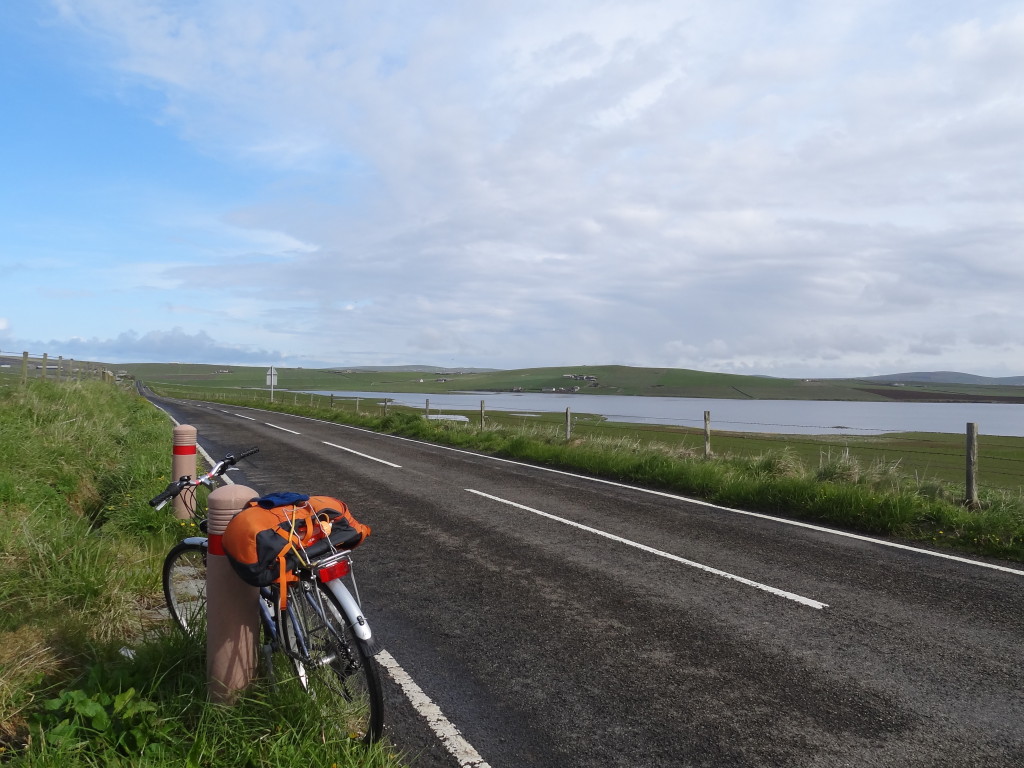Stromness to the Brough of Birsay
Second day of biking in Orkney. This time I knew where to go: away from the ferry towards the Co-op on the main street. My legs remembered the day before right away but I kept going. The road was pretty, and pretty hilly as well. Some parts were really challenging, but I pushed through, using my Hell Week mentality and it worked! Soon, after seeing countless sheep and a few cows, I arrived to Skara Brae.
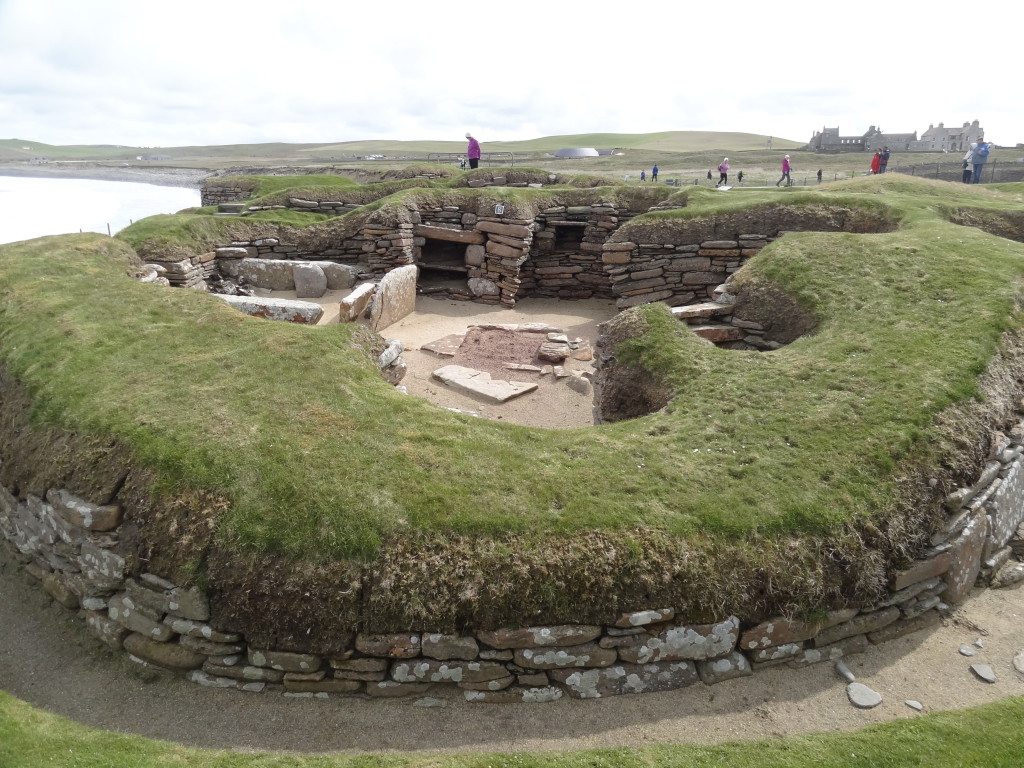
The visit started with a short movie about Skara Brae, and then we moved on to the actual museum, where artifacts were exposed and explained. Skara Brae is one of the best preserved groups of prehistoric houses in Western Europe. They were uncovered in 1850 when a storm removed part of the ground and uncovered the ruins. They date about 5000 years ago, before the pyramids in Egypt and Stonehenge, and because they were well covered by sand, they kept very well. Every house in the village is about the same size, so it is believed that every villager had the same status. The houses were all set-up the same as well.
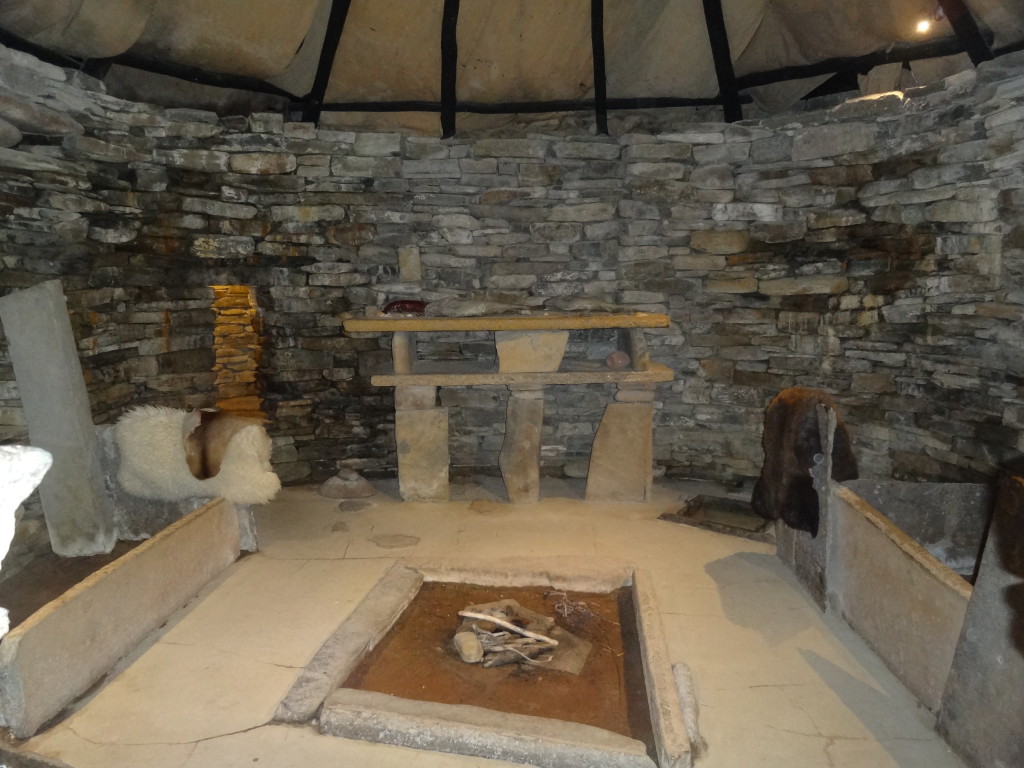
A hearth in the middle, which provided warmth and cooking facilities. A small corridor to enter, ensuring not too much sand and wind would get in. Right in front of the door was a dresser where they probably kept food and valued items. On both side where beds made of stone, which were hopefully covered in hay and fur. There is even evidence that suggest they may have had some kind of sewer system. The small room attached to the main room may even have been a toilet. The houses were also linked all together with a roofed corridor to keep all the inhabitant protected from the elements.
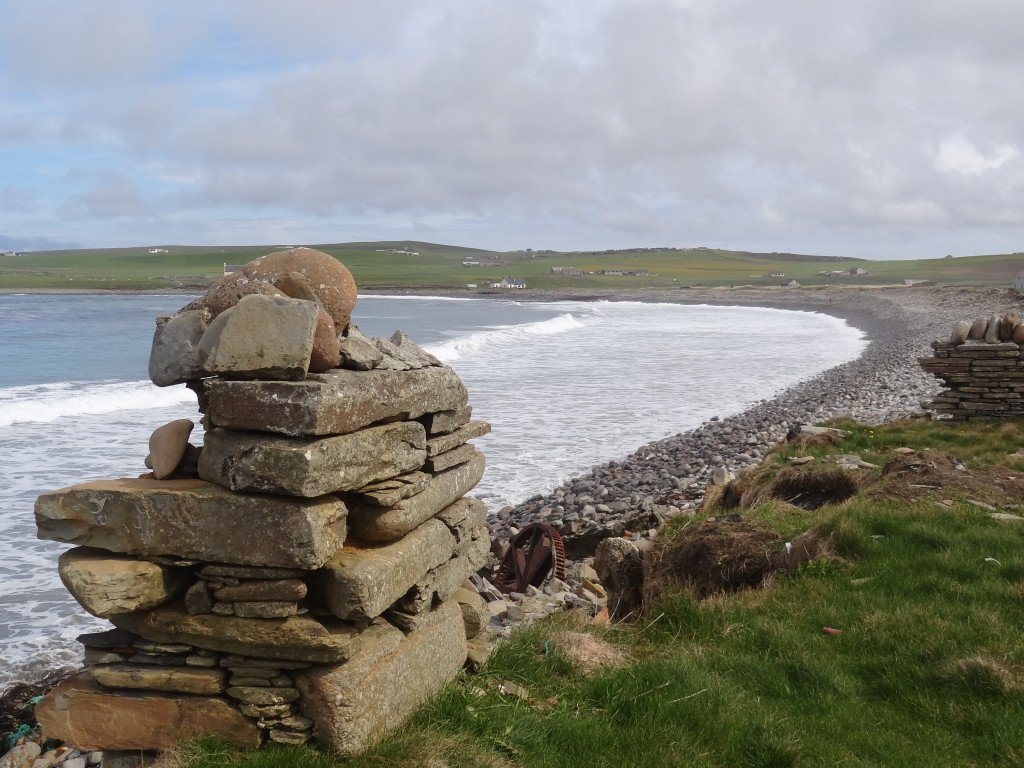
It was a very interesting visit to see the ruins of the village and also to try to imagine why they would have picked that specific area. Back then food was abundant, and there was even a small loch of fresh-water between the village and the sea. The sea has since claimed its right and now the water comes right up to the village.
During the summer time, the ticket includes a visit to Skaill house, the house where Laird William Graham Watt lived when he discovered Skara Brae. The house contains artifact collected by the family over the years.
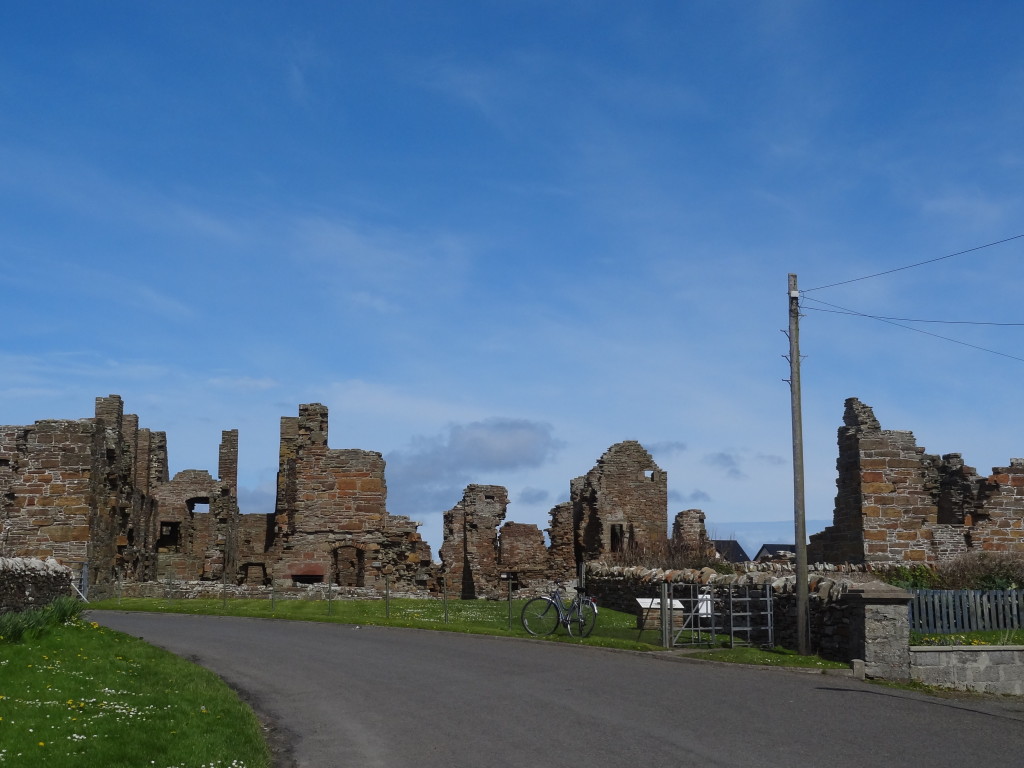
After the visit of Skara Brae, I got back on my bike and kept going until I reached the Earl’s Palace and St. Magnus Kirk. The palace was built by Robert Stuart, Earl of Orkney in the late 16th century. He was pretty mean to the villagers, and after his death his son Patrick succeeded, being even more tyrannical. Both Earl Patrick and his own son, young Robert ended up being captured later on and executed. The Earls’ story is actually a lot longed and more complicated than that, and after their deaths, the Palace was abandoned and it quickly became in ruins.
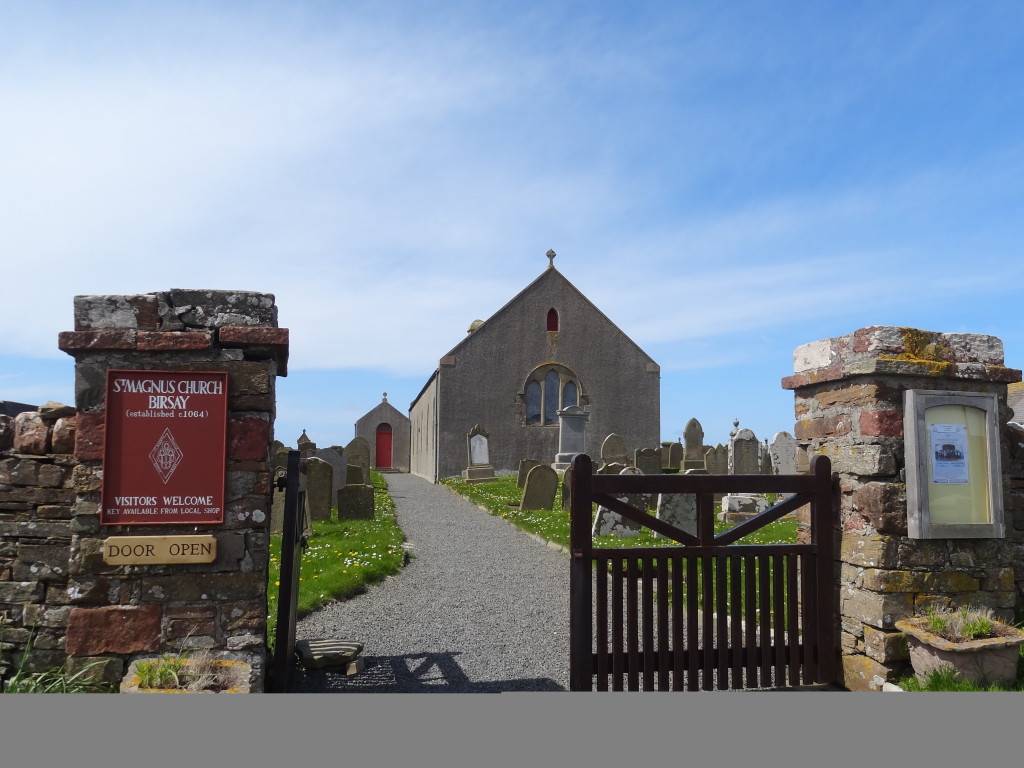
St. Magnus Kirk was built in 1064. It is a very austere church, but it was worth a visit, especially the cemetery, as it had an amazing view of the bay.
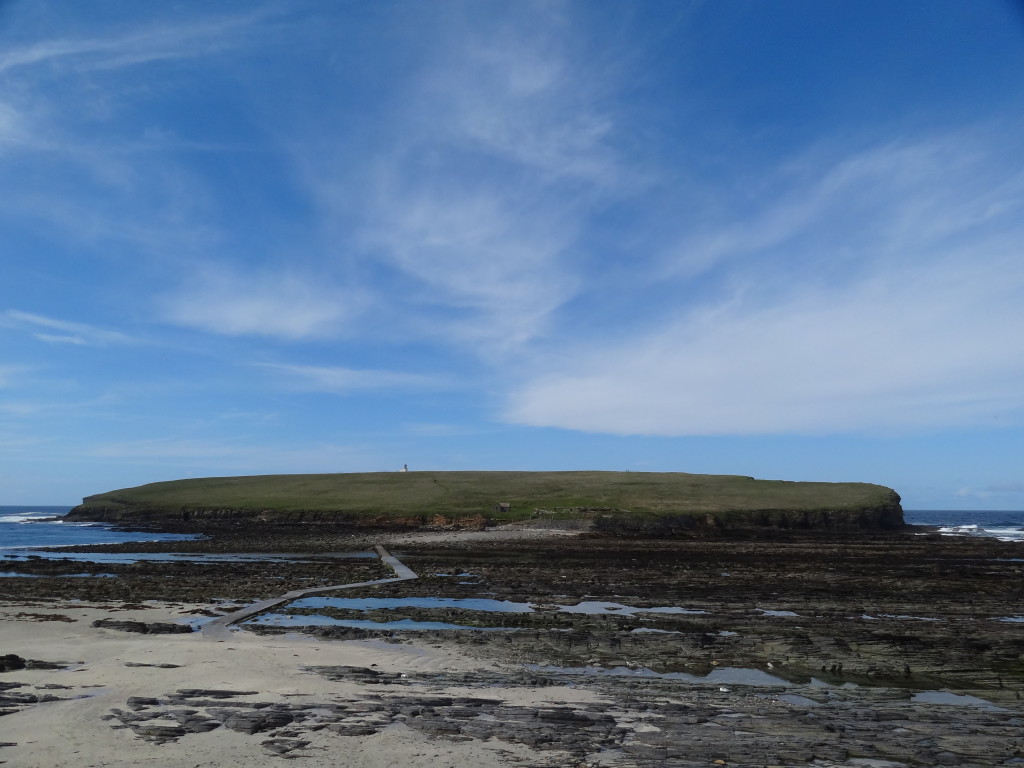
After a quick lunch at the Earl’s Palace, I got back on my bike once again to get to the Brough of Birsay. It’s a tiny island accessible only at low tide. There are also ruins of another Earl’s Palace, and a lot of birds nesting on the cliffs. I walked around, unwillingly scaring a lot of bunnies away, while taking in the views of the cliff and the turquoise water. I even saw an orange cat who looked terrified by me, but he must have thought he was in heaven with all the birds and nests. It must have been like an all-you-can eat buffet for him!!
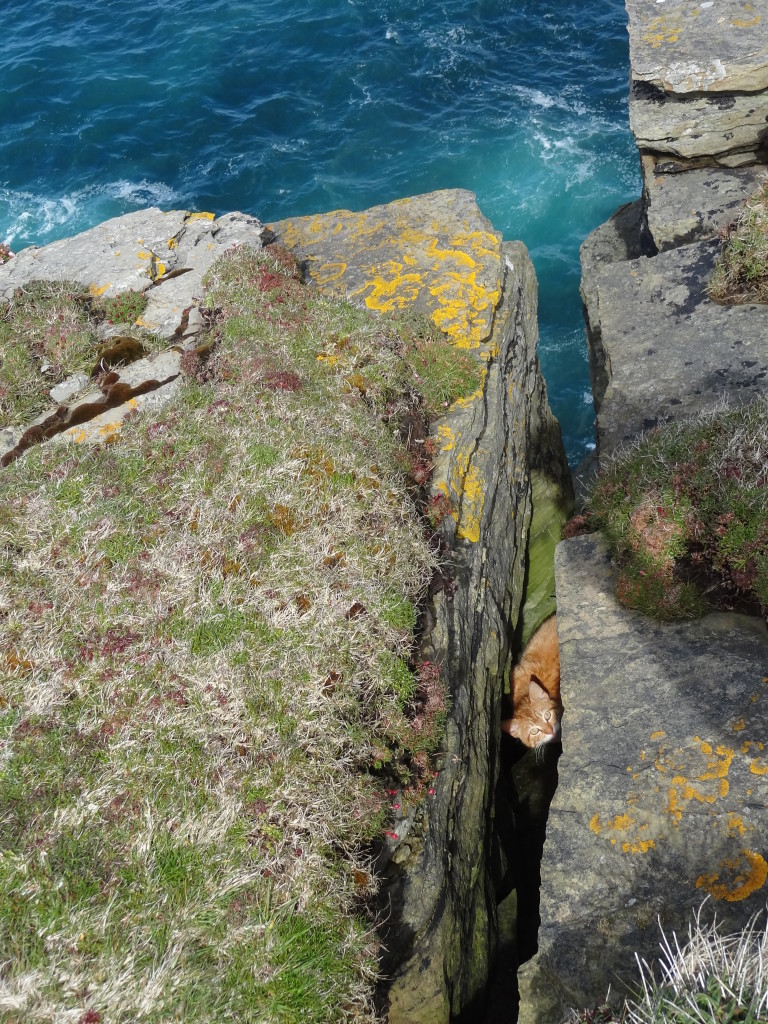
After such a demanding day, I was not too enthusiast to get back on the bike, but I did so anyway. The way back turned out to be slightly easier than the way in as it was mostly downhill. The part along the Loch of Skaill was very good too, mostly flat, with lots or birds and swans.
When I arrived back in Stromness, I brought back the bike to the bike shop, and again nobody was there. I went back to the hostel and called it a day after about 46 km on my bike!
Stromness to Kirkwall
The next morning I woke up to heavy rain. I was very happy I took the bike the day before as I definitely would have not enjoyed my bike ride as much! I was not in a big rush as my sole mission for the day was to take the bus from Stromness to Kirkwall. I decided to call to Maeshowe to see if I could join one of the tours that day, and luckily there was room for the 12:00 tour. I was in the kitchen of the hostel taking things slow when 2 French girls arrived. They saw that I was looking at bus schedules and seemed to believe I was an expert, because they relied on my very recently acquired knowledge and decided to join me for the tour. It was nice to visit something with people instead of being all by myself.
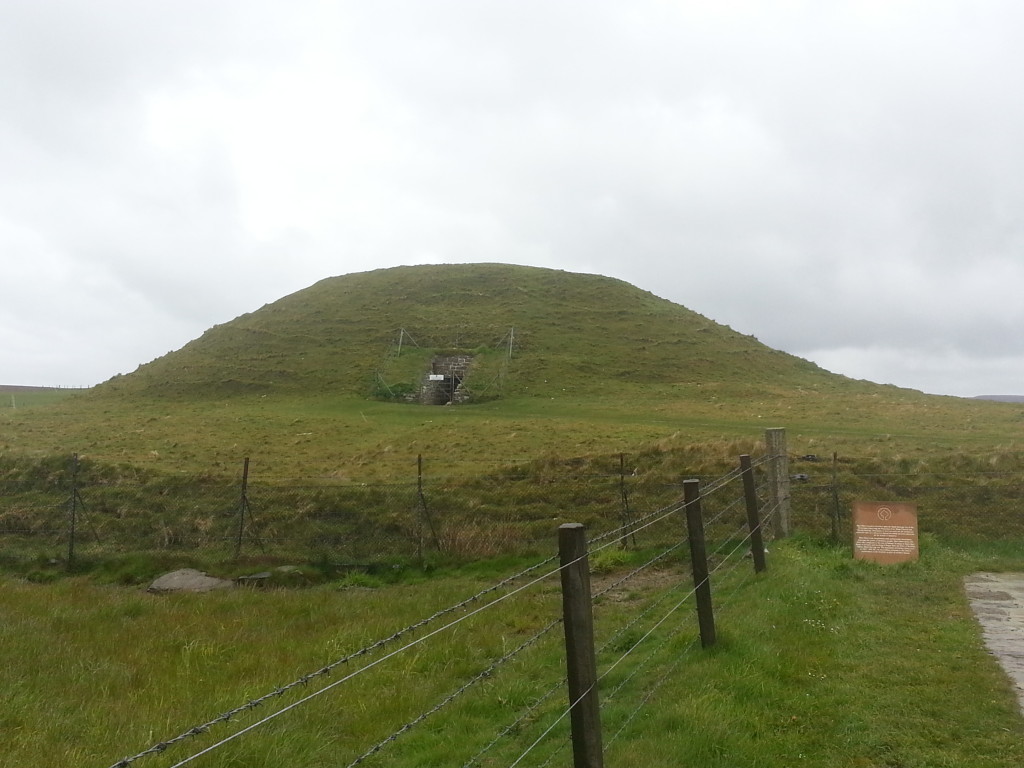
Maeshowe is a Neolithic chambered cairn built around 2800 BC. It was later on discovered by the Vikings, who wrote graffiti on the walls. The funny thing is that all they decided to write was things that people today still write on bathroom stall all over the world. Mostly in the lines of ”So and so was here, 2015”. The tour was interesting, even though the guide seemed quite grumpy at first. In order to get in the chamber, we had to walk with bended knees through a long tunnel. The stones used for the tunnel and the walls are very big, and were brought as one piece in order to make the tunnel prettier. Another interesting fact is that during midwinter, the sun shines through the passage right into the chamber.
After the tour, I went back inside the main building to grab my bag, and as I was checking when the next bus to Kirkwall was, the lady showed me the outside camera where we could see the bus had just parked in front to unload and load passengers. I precipitated the goodbyes with my new friends and ran toward it.
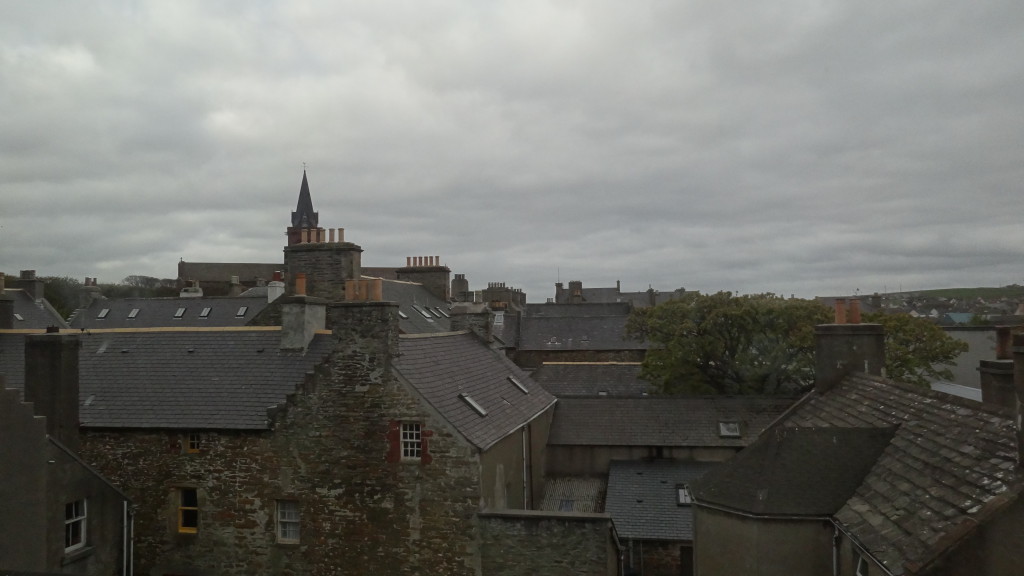
When I arrived in Lerwick, I knew that my host for that night was not home yet, and thanks to Google, I knew there was a left luggage at the bus station. The left luggage was quite expensive, (£4 for about 2.5 hours) but I decided it was worth it for not having to carry my backpack.
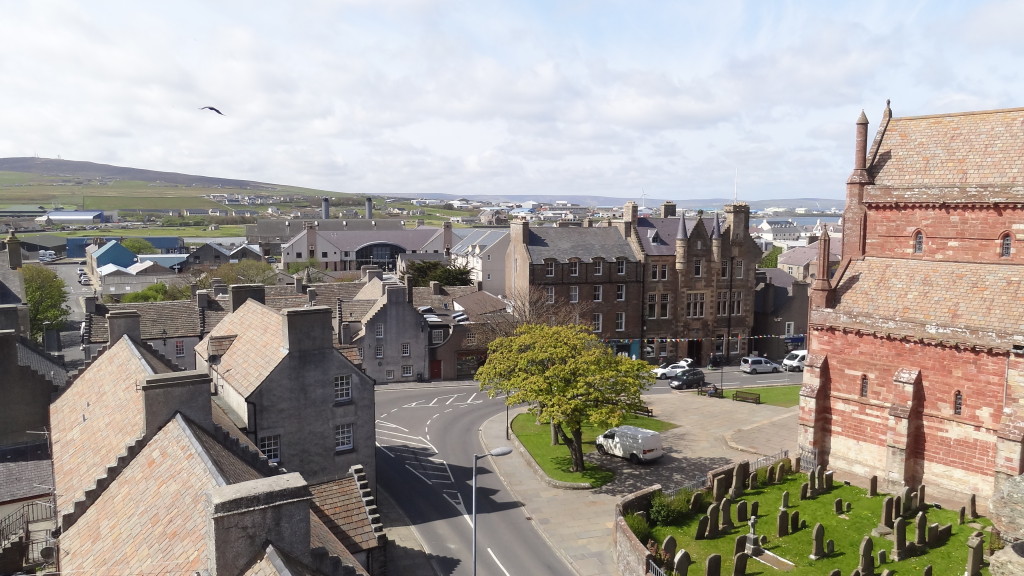
When I started walking in town, there were tourists everywhere, most of them speaking German. I had heard that a cruise ship was in town, but I had not expected 3,300 people to be in the streets of the village, which usually has a population of about 9,000 people. I started looking for a place to have a coffee, in order to avoid both the rain and the crowd. I had almost picked a place that looked fairly full when I saw that the ice cream shop had a sign saying Cafe upstairs. I walked in and had a lovely chat with the older owner and a lady who may or may not have been his wife. We exchanged niceties and spoke about the tourists and the weather. Weather on the island and in Scotland in general is a topic of choice, and a great conversation starter. After my coffee and a talk with the sweet girl working there, and as the rain had mostly stopped, I walked towards St. Magnus Cathedral. The cathedral, built in the 12th century was constructed using red stones and it gives it a special look. It was obviously pretty crowded, but I took my time and enjoyed the woodwork inside.
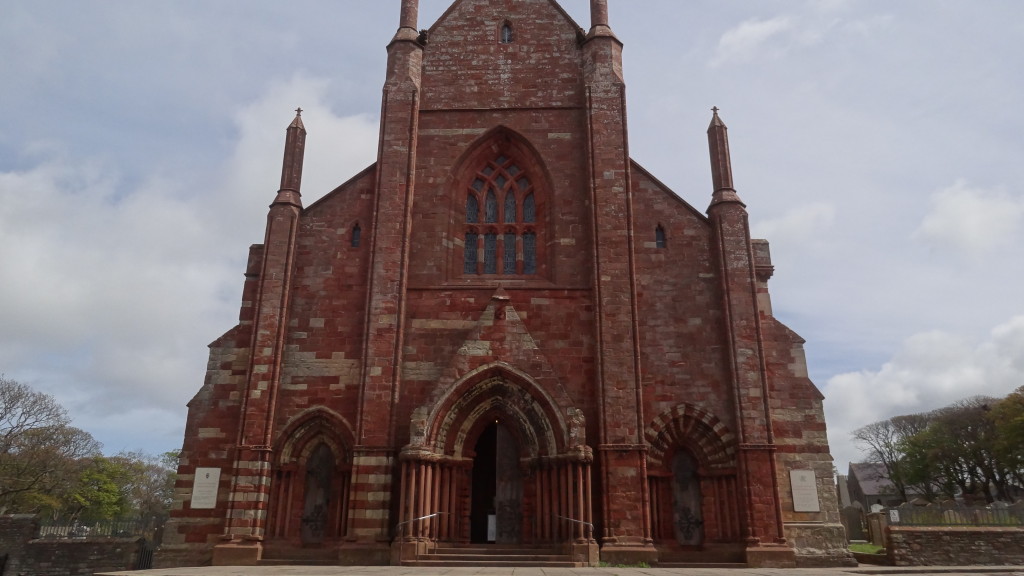
As I walked outside of the cathedral, I met again with the two French girls I had visited Maeshowe with. We spent more time walking around Kirkwall together.
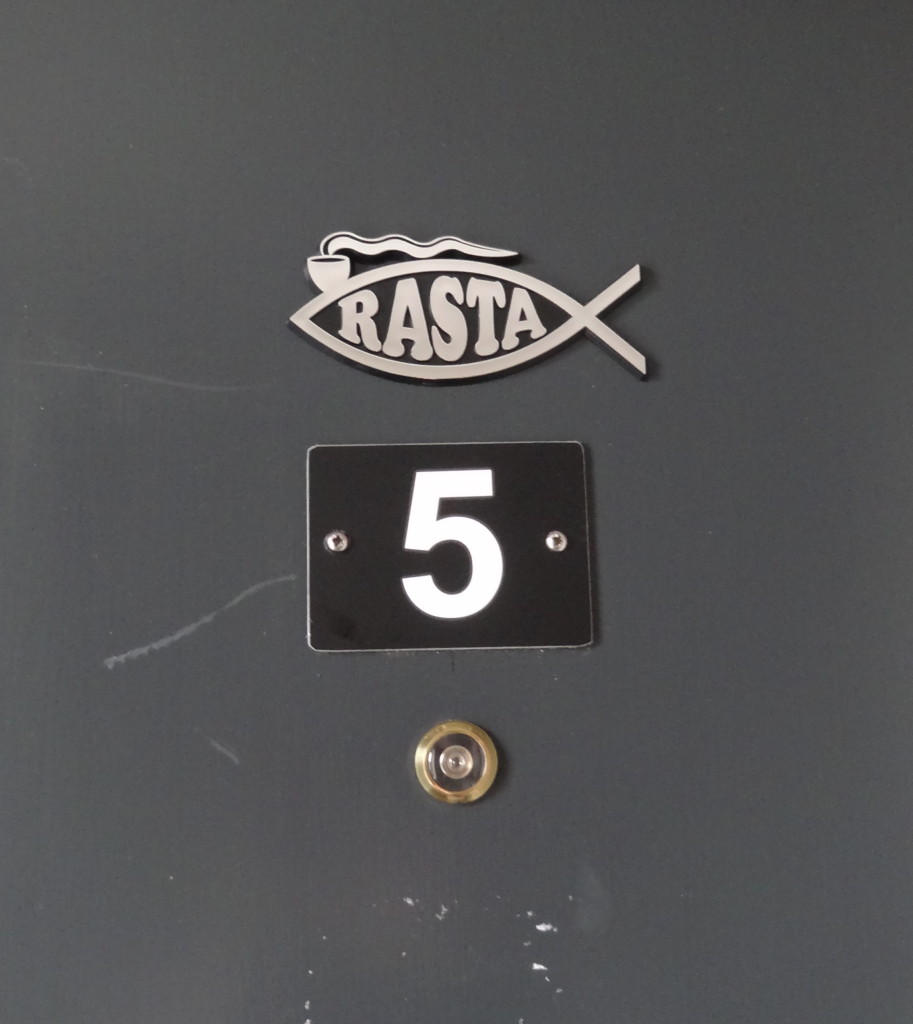
Later on, I picked up my bag from the left luggage and walked towards my host’s flat. It was located on a very tiny street and because they don’t tend to put the numbers on all the doors, I wasn’t sure if I was in front of the right building. He had told me he lived in a place with multiple flats, so as the door was left ajar, I walked in and looked for flat no 5. As soon as I saw the rasta sign on the door, I knew I was in the right spot!
Broch of Gurness
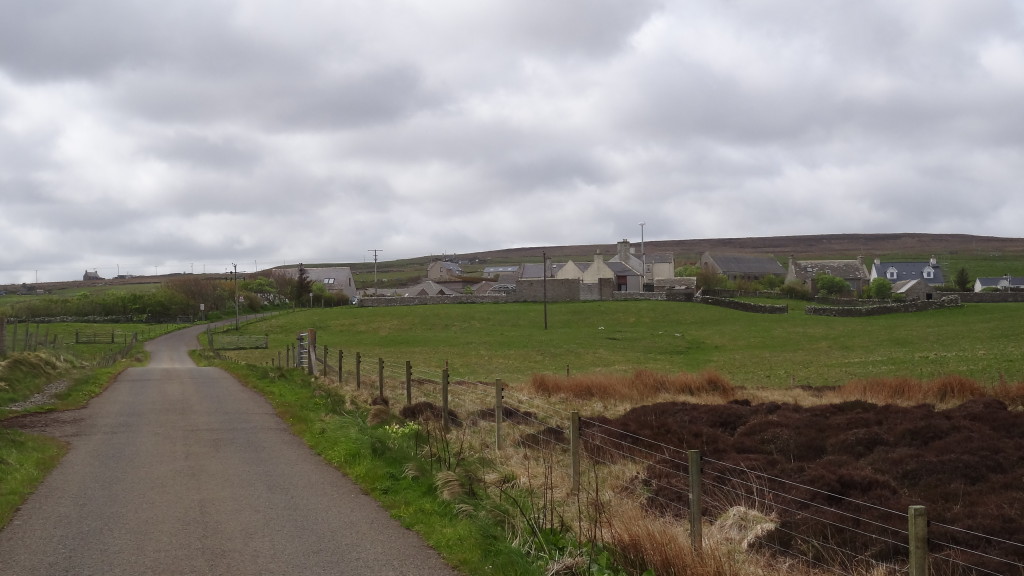
A day later, I decided to head to the Broch of Gurness, another archeological site of the island. In order to get there I had to take the bus no 6, to one of the closest village (Evie), but unfortunately, the only bus running when I was ready was for Tingwall, another village located a little further away. I took this one anyway, knowing I would have to walk about one hour until I reached the Broch of Gurness.
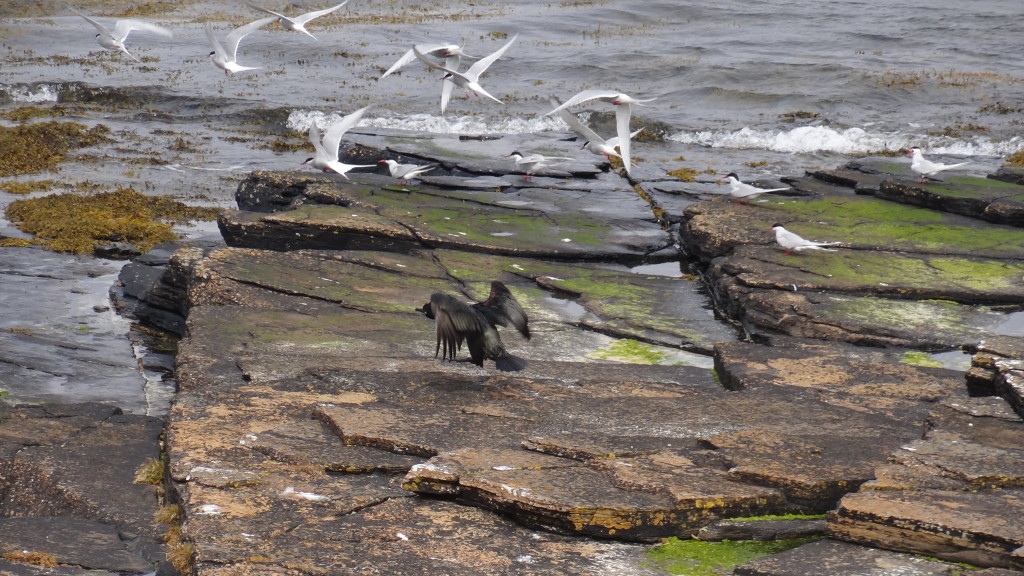
When I arrived at the Broch, a man that had passed me with his car not long ago offered me a ride back to Kirkwall, which I gladly accepted! We visited the site together and had a chat on the way back. He lives part time in Scotland and part time in Sydney, Australia, enjoying summer in each country. He also had visited and worked in many countries so we had a travel-filled conversation!
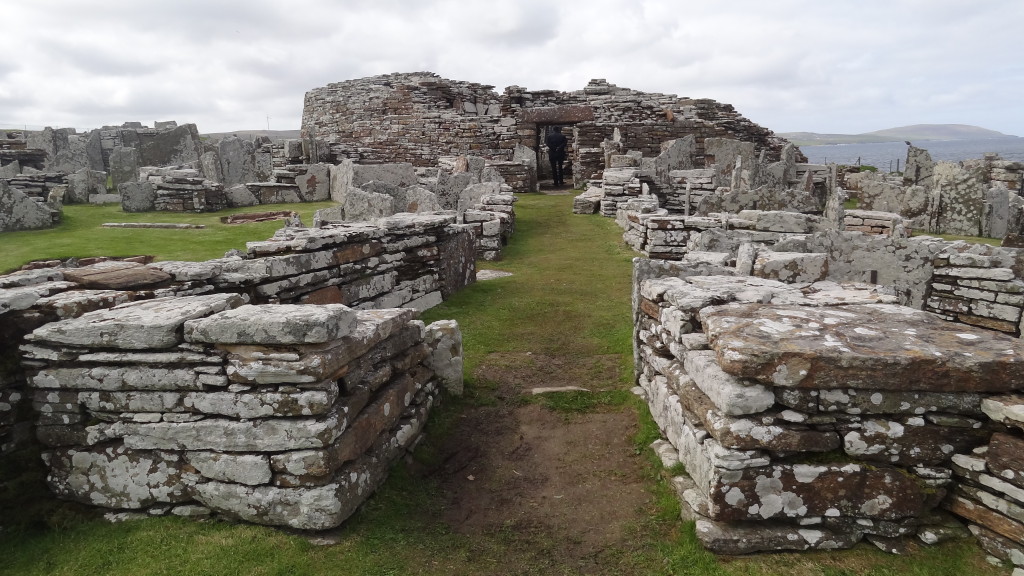
The Broch of Gurness is an Iron-Age building style unique to Scotland. It is basically the ruins of a village which had a tower in the middle. It was again very cool to see, and because it is more open than Skara Brae, you can actually walk around and within the structures, as long as you don’t break anything obviously!
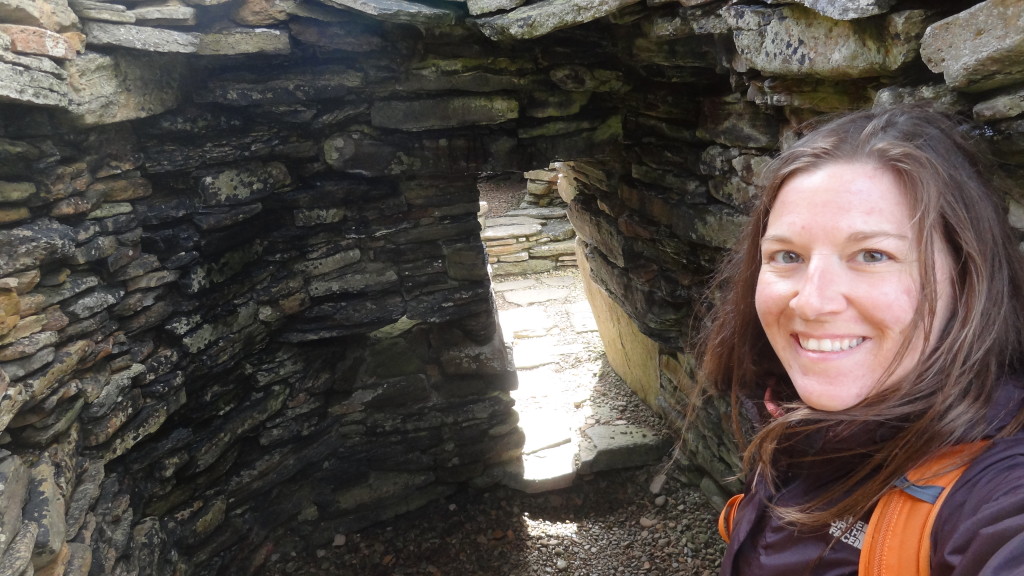
When we arrived back to Kirkwall, I thanked my good Samaritan and went for a visit of the Bishop’s Palace and yet another Earl’s Palace next to St. Magnus Cathedral. The Bishop’s Palace was built in the 12th century while the Earl’s Palace was built by Earl Patrick Steward, the son of the other brutal earl, in the 17th century.
